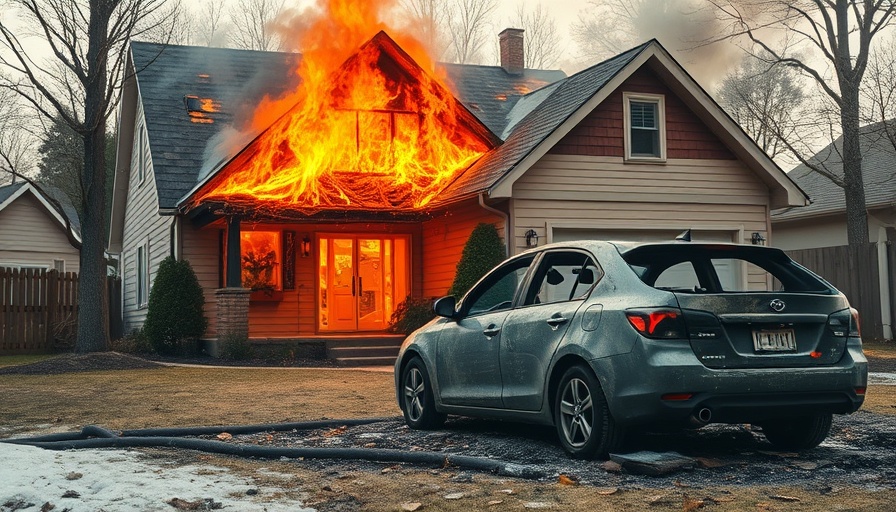
Why Fire-Resistant Homes Matter More Than Ever
Wildfires have become a prominent threat for homeowners across the U.S., with alarming statistics showing that 35% of homeowners now report heightened concerns about wildfire risks to their properties. With an annual toll of $11.4 billion in property damage attributed to house fires in just 2023, it's essential to take preventative measures to protect our homes. Making informed decisions about fire-resistant materials and designs is crucial to ensuring that our homes can withstand this growing threat.
Choosing the Right Fire-Resistant Materials
While no home can claim to be entirely fireproof, utilizing fire-resistant materials can significantly enhance a home's defense against wildfire. The right materials can slow the spread of flames and ultimately minimize damage. Key considerations include:
- Roofs: Opt for metal roofing, known for its non-combustibility and resilience against extreme temperatures. Alternative options like clay tiles offer durability but may be costly. For a balance of protection and affordability, consider Class A asphalt shingles with fiberglass backing.
- Exterior Walls: Insulated concrete forms (ICFs) provide not only fire resistance but also energy efficiency. Fiber cement siding is another excellent choice for fire-prone areas, mimicking wood's aesthetic without the risk.
- Windows and Doors: Investing in tempered glass or multi-pane windows enhances heat resistance while offering better insulation.
Innovative Installation Techniques
Proper installation techniques are as important as the choice of materials. Fire-resistant underlayment, tight seams, and careful detailing can prevent embers from infiltrating your home. This proactive measure is pivotal in ensuring that even the best materials can perform to their fullest potential.
Smart Landscaping Strategies
Beyond structural choices, smart landscaping can act as an additional buffer against wildfires. Keeping your yard free of highly flammable plants and opting for fire-resistant landscaping features—such as gravel and non-combustible materials—can greatly reduce potential fire hazards near your home.
Policy and Community Initiatives
As homeowners, we are part of a larger community effort to combat the ongoing threat of wildfires. Local initiatives promoting fire-resistant building codes and community-wide prevention strategies should be supported and advocates for change encouraged. Engaging with neighbors to initiate collective efforts can lead to safer neighborhoods.
Future Trends: A Look Ahead
As fire incidents become more frequent, innovations in fire-resistant products and designs will evolve. Homeowners should keep an eye on emerging trends in sustainable building materials that not only resist fire but also contribute to environmental conservation efforts, such as products made from recycled materials.
Contributing to Sustainable Living
Adopting fire-resistant materials aligns with sustainable living. Many options are made from renewable or recycled resources, thus minimizing your carbon footprint while enhancing safety. Simple actions like choosing eco-friendly building materials and engaging in sustainable practices can create a significant impact. For instance, explore recycling centers in your area to ensure responsible disposal and recycling of old materials.
Whether you’re constructing a new home or looking to bolster an existing one, implementing fire-resistant strategies not only fortifies your home against wildfires but also supports a greener, more sustainable lifestyle. Protect your home and contribute to environmental sustainability by investing in eco-friendly materials.
Take Action Now: Research your local recycling centers, engage in community fire prevention initiatives, and make informed material choices to protect your home from wildfires today!
 Add Row
Add Row  Add
Add 




 Add Row
Add Row  Add
Add 

Write A Comment